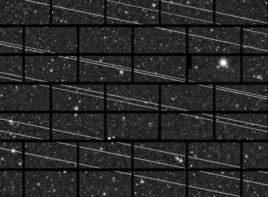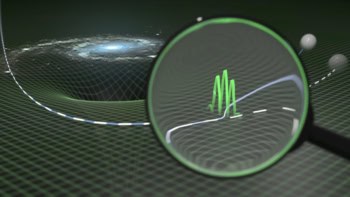The Hubble Space Telescope has discovered that gas and dust disks in evolving star systems become disks with debris and planets when the stars are 2 to 8 million years old. The results are from observations of a circumstellar disk of dust and gas extending more than 800 times the Earth-Sun distance away from AB Aurigae, a star that is 2.4 times larger than the Sun and 469 light-years from Earth. The dust disk appears to be "the analog of a Kuiper Belt, " says Carol Grady of NASA's Goddard Space Flight Center in Maryland. The work was announced yesterday at the annual American Astronomical Society meeting in Chicago.

The results help to confirm the view that other planetary systems form in ways similar to our solar system. The Kuiper belt is a disk of dust, gas and icy comets stretching from 40 to 10000 times the Earth-Sun distance. Recently astronomers observed protoplanetary disks encircling young stars up to 1 million years old and planetary disks surrounding more mature stars around 8 to 20 million years old. The AB Aurigae observations – taken by the Space Telescope Imaging Spectrograph onboard Hubble – are between these two points.
“We don’t see any evidence of unseen large bodies sweeping out dust lanes, ” says Grady. “But we have seen unprecedented structure in the dust clouds, suggesting that material is beginning to clump together in a process which could form planets in the next few million years.”



